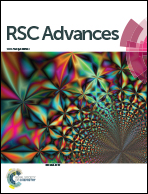Influences of melt-draw ratio and annealing on the crystalline structure and orientation of poly(4-methyl-1-pentene) casting films
Abstract
Poly(4-methyl-1-pentene) casting films with row-nucleated lamellar structure were extruded through a slit die followed by stretching using a chill roll. The influences of melt draw ratio, annealing temperature, annealing time and supplied strain level on the crystalline morphology and orientation of the poly(4-methyl-1-pentene) casting films were carefully investigated by means of scanning electron microscopy, differential scanning calorimetry, Fourier transform infrared spectrometry and X-ray diffraction. It was found that the crystalline morphology and the degree of orientation were greatly influenced by the melt draw ratio. In addition, both the changes of crystallinity and orientation degree exhibited similar tendencies (firstly increasing and then decreasing) upon increasing the free annealing temperature and time. The use of an appropriate temperature and time meant that molecular chains of the amorphous region could rearrange into a crystal lattice and defects could be removed, while an excessive annealing temperature and time could lead to partial imperfect crystals melting and recrystallizing or even disorientation phenomena. In contrast to the free annealing method, it was surprisingly discovered that annealing under supplied strain was really helpful in improving the crystalline structure and orientation of casting films.


 Please wait while we load your content...
Please wait while we load your content...